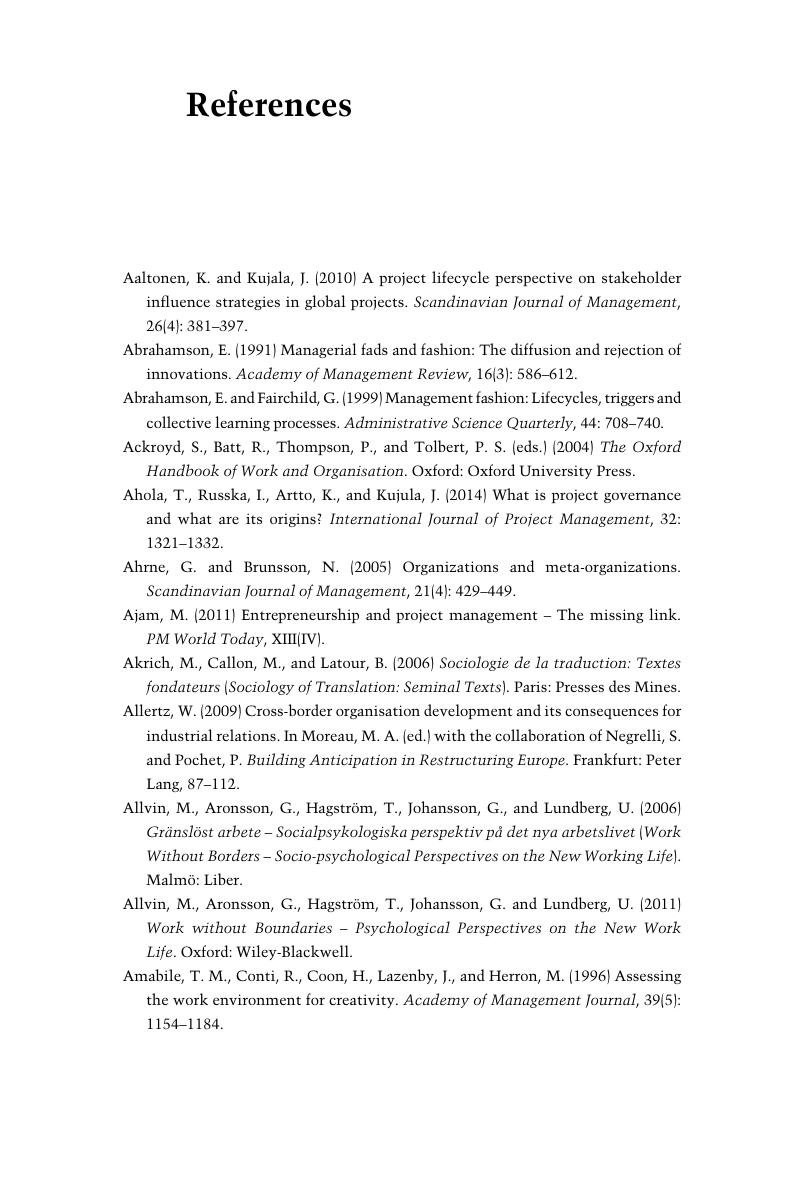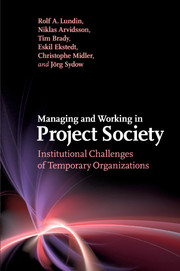Book contents
- Managing and Working in Project Society
- Managing and Working in Project Society
- Copyright page
- Contents
- Figures
- Preface: contents in a nutshell
- Book part
- 1 Project organizing and industrial organization – transformation dilemmas
- 2 Projectificationtrendsand organizational archetypes
- 3 Managing in Project Society
- 4 Work and employment regimes in Project Society
- 5 Institutions and projectification
- 6 Trends and theory implications
- References
- Index
- References
References
Published online by Cambridge University Press: 05 July 2015
- Managing and Working in Project Society
- Managing and Working in Project Society
- Copyright page
- Contents
- Figures
- Preface: contents in a nutshell
- Book part
- 1 Project organizing and industrial organization – transformation dilemmas
- 2 Projectificationtrendsand organizational archetypes
- 3 Managing in Project Society
- 4 Work and employment regimes in Project Society
- 5 Institutions and projectification
- 6 Trends and theory implications
- References
- Index
- References
Summary

- Type
- Chapter
- Information
- Managing and Working in Project SocietyInstitutional Challenges of Temporary Organizations, pp. 231 - 271Publisher: Cambridge University PressPrint publication year: 2015

